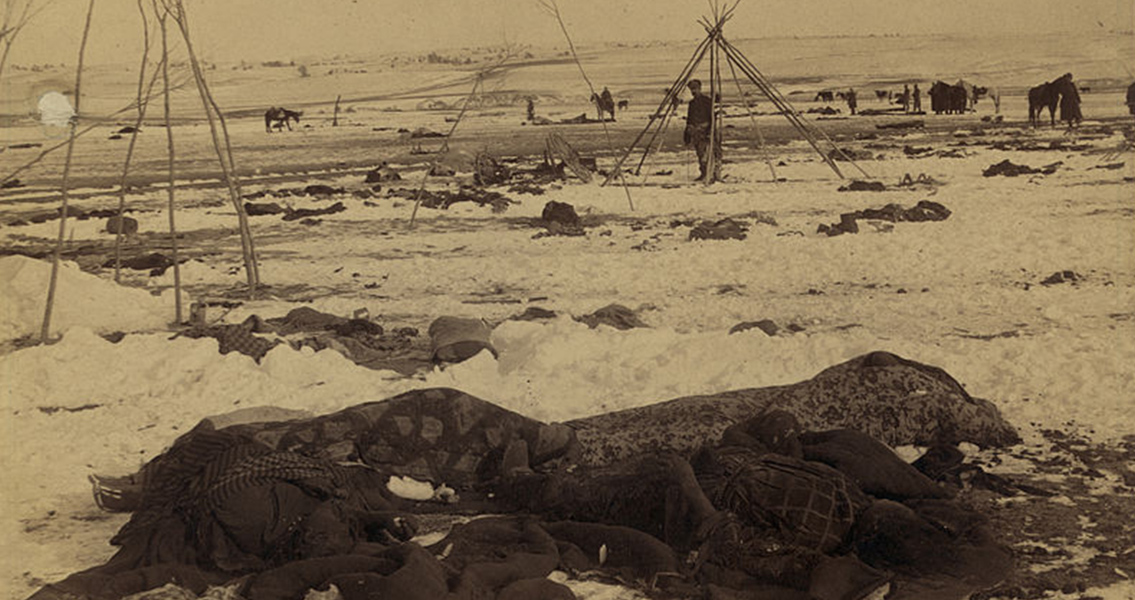<![CDATA[The 29th December marks the anniversary of the conflict in 1890 between US soldiers and Sioux Indians at Wounded Knee, on the Pine Ridge reservation in South Dakota. Although US military sources at the time referred to the event as a battle, it is now largely considered to have been an avoidable massacre of the Sioux Indians, one that would ultimately signal the end of the Indian Wars in North America. At the heart of the incident was the Ghost Dance movement, a form of mystic ritual among Native Americans that had been growing in popularity throughout the late 1880s. Referred to as a religion by some, the Ghost Dance movement started with Wovoka, a Paiute Holy Man from Nevada. Based on a vision he had received during a solar eclipse, as well as the teachings of his father, Wovoka spread his belief that the world would soon come to an end, after which it would return in a pure. bountiful state to be inherited by the Native Americans. As is often the case with such mystical predictions, the Native Americans had to change their ways to earn the reward. During the nineteenth century the Indian tribes suffered heavy military defeats, forced relocation and confinement to reservations.The Buffalo, so central to their lives and culture, had all but disappeared and their ancient, free roaming way of life was close to completely destroyed. Wovoka taught that the Indians had to shun the customs of 'white culture', in particular alcohol, and devote themselves instead to a live of prayer, meditation, ritual and dancing. The desperate situation Native Americans found themselves in by the late 1880s meant such extremist ideas had significant reach. Tribe leaders from across the United States undertook pilgrimages to Nevada to hear Wavoka's teachings, including leaders from the reservations in South Dakota. Officials in the United States government and military became increasingly concerned about the new movement, one shrouded in mystery to outsiders but gathering a huge and devoted following among Native Americans. In 1890 the Ghost Dance rites were banned on the Pine Ridge and several other reservations. Tensions escalated when the Sioux Indians ignored the ban and continued to practice the Ghost Dance rituals. On December 15th reservation police attempted to arrest Sitting Bull, the famous Sioux chief who they mistakenly believed was a Ghost Dancer. The hope was that arresting such a high profile figure would send a powerful message, however, Sitting Bull was killed in the attempt to arrest him, and the situation swiftly deteriorated. On December 29th US Cavalry officers surrounded a group of Ghost Dancers near Wounded Knee Creek and demanded that they surrender their weapons. Details about what happened next are at best vague. Sources from the time, including the account of Phillip Wells, a man of Sioux origin who served as an interpreter for the US military, suggest a disagreement started between Big Foot, the Ghost Dancer's leader, and US Army Colonel Forsyth. According to Wells' account, Big Foot claimed the Indians had surrendered all their weapons, which the colonel didn't believe, and so insisted on individual searches. It seems that a minor fight between an army officer and a Sioux Indian started, which was quickly followed by a shot being fired. No one knows which side fired the first shot, but the consequences are pretty clear. The Ghost Dancers were surrounded and outgunned, the gun fire from the US Soldiers killing scores of Indians, including many women and children who lived nearby. Official figures put the number of US Army casualties at 25, but historians still debate how many Indians were killed, with proposed figures ranging from 150 to over 300. The loss of life at Wounded Knee proved enough to bring the Ghost Dance movement to an end. Historians also refer to it as the last action of the Indian Wars, the long conflict between the United States and Native American Indians over North America. For America's indigenous population it seemed to signal the closing of their free roaming, traditional way of life, and confirmation of a future that would be spent on reservations.]]>
Wounded Knee
